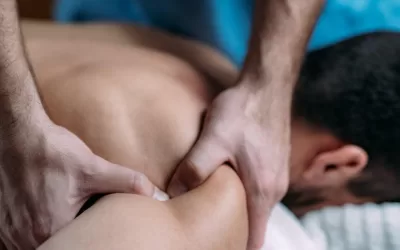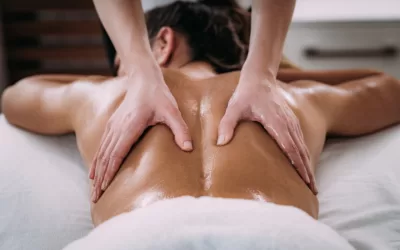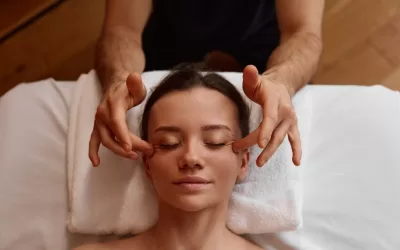Preparing for your first Structural Integration session for scoliosis is crucial for maximizing its benefits. Understanding what to expect, wearing comfortable clothing, and staying hydrated are key steps to ensure a successful experience. Communicating openly with your Rolfer about any concerns or questions you may have can help tailor the session to your specific needs. Being mentally prepared and maintaining a positive attitude can enhance the effectiveness of the treatment. By following these preparation tips, you can approach your initial Structural Integration session with confidence and set the stage for a productive journey towards managing scoliosis.
Understanding Structural Integration
Structural Integration focuses on addressing fascial restrictions in the body to enhance mobility and comfort for individuals with scoliosis. By targeting the connective tissues, Structural Integration aims to release tension and improve overall posture.
The direct relationship between posture, ground connection, and the sensation of walking becomes more pronounced after Structural Integration sessions. Patients often experience a newfound sense of alignment and stability as they move.
Releasing bracing patterns in the hips and feet through Structural Integration can significantly benefit scoliosis patients by enhancing the alignment of the entire body. This process helps in restoring balance and improving movement efficiency.
Embracing the feeling of openness and relaxation is key during Structural Integration sessions. This practice aims to realign the body’s structures and promote a state of comfort, allowing for natural movements to occur effortlessly.
Scoliosis Overview
Scoliosis, a condition affecting the spine’s curvature, can significantly impact posture and overall health. The misalignment caused by scoliosis can lead to various issues such as discomfort and restricted movement due to the body’s asymmetry. This condition is not only about the spine but also how it influences the entire body.
The relationship between scoliosis and fascial restrictions is crucial. Fascia, a connective tissue surrounding muscles and organs, can become tight or restricted in individuals with scoliosis. These restrictions can further exacerbate postural imbalances and limit mobility, especially in areas like the hips, pelvis, and legs. Addressing these fascial restrictions is essential for improving overall movement and reducing discomfort associated with scoliosis.
When left untreated, scoliosis can lead to decreased mobility, affecting daily activities and quality of life. By addressing this condition through specialized sessions like Structural Integration, individuals can experience improved flexibility, reduced pain, and enhanced overall well-being. Structural Integration focuses on realigning the body structurally to restore balance and openness throughout the entire system.
Defining Condition
- Scoliosis refers to an abnormal sideways curvature of the spine.
- This condition impacts posture by causing asymmetry in the body.
- Different types of scoliosis exist, including idiopathic and congenital forms.
Common Symptoms
- Individuals with scoliosis may experience back pain or discomfort.
- Scoliosis can limit mobility and flexibility in daily movements.
- Recognizing signs like uneven shoulders or waist asymmetry is crucial for early detection.
Treatment Options
- Conventional treatments for scoliosis include bracing or surgery.
- Structural Integration offers a holistic approach by focusing on structural alignment.
- Comparatively, Structural Integration aims to address not just the symptoms but also the root causes of scoliosis.
Preparing for First Session
When preparing for your first Structural Integration session, it’s crucial to understand how proper posture impacts your whole body. Take the time to rest and relax before the session to ensure you are in a comfortable state. It’s essential to fill out any necessary forms and provide relevant information about your scoliosis history, such as bracing or past treatments. Be open and honest with your rolfer about how you feel physically and emotionally, especially regarding your hips, legs, and any discomfort.
Mental Readiness
Mentally preparing for your initial Structural Integration session is vital. Understanding the importance of having a positive mindset before starting Structural Integration can significantly impact the experience. Learning relaxation techniques can help ease any anxiety or nervousness you may feel before the session.
Physical Preparation
Physically getting ready for your first Structural Integration session involves learning simple exercises to prepare your body for the techniques used during the session. Ensuring that you are well-hydrated and wearing comfortable clothing is essential for a successful session.
What to Expect
Prepare to feel a sense of relaxation and comfort during the session. The environment is designed to promote rest and ease any tension in your body. As you enter the session, take a moment to breathe deeply and let go of any stress or worries.
Understand that the session may take some time, so plan accordingly. Allow yourself ample time before and after the session to fully immerse yourself in the experience. Rushing can hinder the benefits you may receive from Structural Integration for scoliosis.
Be open to experiencing different sensations throughout the session. From gentle pressure to subtle movements, each touch is aimed at aligning your body and addressing scoliosis issues. Embrace these sensations as part of the healing process.
Know that any discomfort felt during the session is temporary and can lead to long-term health benefits. The therapist’s techniques are tailored to improve your overall well-being, even if it means encountering temporary discomfort. Trust in the process and focus on the positive outcomes ahead.
Session Structure
- Understand the typical structure of a Structural Integration session.
- Learn about the initial assessment and goal-setting process.
- Discover how each session progresses in addressing scoliosis issues.
Techniques Used
- Explore the specific techniques utilized in Structural Integration for scoliosis.
- Understand how manipulation and movement are key components of Structural Integration.
- Learn about the hands-on approach of Structural Integration therapists during sessions.
Duration and Frequency
- Know the recommended duration of each Structural Integration session for scoliosis.
- Understand the frequency of sessions needed for optimal results.
- Learn how consistency plays a crucial role in the effectiveness of Structural Integration treatment.
Posture Improvement
Assess your current posture to identify misalignments due to scoliosis. Structural Integration helps improve alignment for better posture.
Address any bracing or stiffness in the hips that affects mobility. Structural Integration enhances comfort and movement ease.
Release fascial restrictions in the legs, pelvis, and neck to promote better alignment. This supports overall health improvement.
Create openness and space in the body during the session to foster a deeper relationship with the rolfer.
Techniques Overview
- Different Structural Integration techniques are used for scoliosis treatment.
- Myofascial release and deep tissue work play crucial roles in Structural Integration.
- Structural Integration techniques are gentle yet highly effective in addressing scoliosis issues.
Expected Outcomes
Set realistic expectations for your Structural Integration sessions’ outcomes. Gradual progress leads to improved posture and mobility.
Structural Integration contributes to long-term relief from scoliosis symptoms. The holistic approach enhances overall well-being and comfort.
Managing Chronic Pain
Prepare your mind and body for the session by acknowledging any discomfort caused by fascial restrictions related to scoliosis. Addressing these restrictions may bring some initial discomfort but offers long-term health benefits.
Prioritize comfort during the session by openly communicating with your rolfer about any sensations of discomfort or pain. This helps them adjust the session to ensure you feel at ease and supported throughout.
Focus on your hips and mobility during the session, as these areas are often impacted by scoliosis. By addressing hip mobility and releasing any bracing patterns, you can enhance your overall posture and movement.
Allow yourself time to rest and integrate the effects of the session on your body. Embrace any new sensations or feelings post-session, indicating your body’s response to the work done and its journey towards improved whole-body health.
Pain Reduction Strategies
- Communicate openly with your therapist about discomfort levels.
- Explore techniques that can alleviate scoliosis-related pain effectively.
- Understand how Structural Integration methods target pain associated with scoliosis.
Long-term Benefits
- Discover lasting benefits such as improved well-being through Structural Integration.
- Learn how Structural Integration promotes overall body alignment.
- Understand the potential for long-term postural enhancements through Structural Integration.

Maximizing Effectiveness
To maximize the benefits of Structural Integration for scoliosis, it’s crucial to approach each session with a mindset of openness. By embracing openness, you allow your body to achieve better alignment and release fascial restrictions that may be contributing to your condition. Engage your whole body without bracing or holding back; instead, channel your energy towards the process.
During your Structural Integration sessions, take the time to gather information about how your body is responding. Understanding your body’s restrictions and comfort levels enables the therapist to tailor techniques that are just right for you. This personalized approach enhances the effectiveness of the treatment, addressing your specific needs in a targeted manner.
Incorporating relaxation and proper breathing techniques during your sessions is essential. These practices not only enhance the therapeutic effects of Structural Integration but also promote a deeper sense of health and well-being. Effective communication with your therapist is key; expressing any sensations or areas of discomfort helps them adjust their techniques accordingly.
Managing Fatigue
Prioritize rest and adequate sleep before your Structural Integration session to ensure your body has the necessary energy. Be mindful of any fascial restrictions that might affect your mobility and comfort during the session. Avoid bracing or holding yourself in uncomfortable positions to allow the practitioner to work effectively on your whole body.
Take the time to walk and move gently before the session. This helps your body adjust to gravity and reduces any discomfort during the Structural Integration session. Gentle movement beforehand can prepare your body for the deep manipulations involved in Structural Integration.
Recognizing Signs
Recognize positive signs of progress as you undergo Structural Integration treatment. Notice subtle changes in posture and movement, which indicate improvement in your body’s alignment and function. Identifying areas of tension release and increased mobility can show how Structural Integration is benefiting you.
Understand how small improvements in how you stand, sit, or move can signify progress in realigning your body. These signs often manifest as improved flexibility, reduced pain, or better overall movement patterns. Acknowledging these changes can motivate you to continue with your Structural Integration sessions.
Recovery Tips
Receive practical tips for enhancing your recovery post-Structural Integration sessions. It’s crucial to maintain good posture and heightened body awareness after each treatment. These practices help sustain the benefits of Structural Integration and prevent old habits from reasserting themselves.
Incorporate complementary practices like stretching and mindfulness into your routine for optimal recovery post-Structural Integration. Stretching can help maintain the gains made during the session by promoting flexibility and preventing muscle tightness. Mindfulness techniques aid in staying present with bodily sensations, fostering a deeper connection with the effects of Structural Integration.
Life-Changing Experiences
Experiencing the benefits of improved mobility and comfort post-session can transform your daily life. You’ll feel a whole-body sensation of ease, enhancing your overall well-being. Building a strong relationship with your body through Structural Integration fosters a sense of openness and connection.
Witnessing real-life examples of children with scoliosis finding relief from discomfort and bracing is inspiring. Structural Integration sessions help improve their posture and walking gait, providing them with newfound comfort and mobility. Embracing a different way of moving and feeling, Structural Integration addresses hip imbalances and offers long-lasting relief from scoliosis-related issues.
Personal Stories
Explore touching personal stories of individuals who have undergone Structural Integration for scoliosis. Each story reveals unique journeys and experiences, offering insights into the transformative effects of Structural Integration on scoliosis management. Learn firsthand how Structural Integration has positively impacted the lives of individuals dealing with scoliosis.
Understand the emotional rollercoaster that comes with managing scoliosis through Structural Integration. Patients share their struggles, triumphs, and newfound sense of freedom post-treatment. These stories highlight the resilience and courage displayed by individuals facing scoliosis challenges.
Long-term Impact
Discover the profound long-term impact that consistent Structural Integration sessions can have on scoliosis management. By addressing postural imbalances, Structural Integration helps maintain sustained improvements in posture over time. The transformative effects extend beyond physical changes to encompass enhanced overall well-being and quality of life.
Learn about the journey towards better posture and reduced discomfort through regular Structural Integration sessions. Patients share how their bodies adapt positively to the treatment, leading to increased mobility and reduced pain levels. The long-term benefits of improved posture contribute significantly to their quality of life.
Summary
Understanding the principles of Structural Integration for scoliosis, preparing adequately for the initial session, and knowing what to expect are pivotal in maximizing the benefits of this therapy. Posture enhancement, pain management, fatigue reduction, and profound life changes are among the transformative outcomes that can be achieved through dedicated Structural Integration sessions tailored for scoliosis patients.
Embracing a proactive approach towards Structural Integration for scoliosis can lead to significant improvements in one’s quality of life. By prioritizing consistent sessions, adhering to the therapist’s guidance, and maintaining open communication, individuals can unlock the full potential of this holistic therapy. It is essential to stay committed to the process and remain receptive to the changes unfolding within the body. Remember, each session is a step towards better alignment and overall well-being.
Frequently Asked Questions
1. How can Structural Integration help with scoliosis?
Structural Integration can improve scoliosis symptoms by releasing tension in muscles, improving posture, and enhancing body alignment. Through targeted manipulation and movement education, Structural Integration aims to alleviate pain and discomfort associated with scoliosis.
2. Is Structural Integration suitable for everyone with scoliosis?
Structural Integration can benefit individuals with scoliosis, but it’s essential to consult with a healthcare provider or a certified Rolfer before starting sessions. They can assess your condition and determine if Structural Integration is a suitable complementary treatment for your specific case.
3. What should I wear to my first Structural Integration session for scoliosis?
Wear comfortable clothing that allows the Rolfer to assess your posture and movement patterns easily. Loose-fitting attire like gym wear or yoga pants is ideal. Avoid clothing that restricts movement or tightens around areas of concern related to your scoliosis.
4. How many Structural Integration sessions are typically needed for scoliosis?
The number of sessions needed varies based on individual needs and the severity of scoliosis. While some may experience benefits after a few sessions, others might require more extensive treatment over time. Your Rolfer will discuss a personalized treatment plan tailored to your condition.
5. Can Structural Integration help manage chronic pain associated with scoliosis?
Structural Integration techniques aim to address chronic pain by releasing tension in muscles, promoting better alignment, and enhancing body awareness. By targeting specific areas affected by scoliosis, Structural Integration may help reduce discomfort and improve the overall quality of life for individuals dealing with chronic pain.
Elevating Scoliosis Management with Structural Integration: Achieve Structural Balance with MedicinEvolution’s Revolutionary Approach!
Are you or someone you know navigating the complexities of scoliosis, seeking relief from pain, or aspiring to improve posture and body alignment? MedicinEvolution stands at the forefront of integrating Structural Integration into scoliosis management and structural integration, offering individuals a path to optimal health and bodily harmony. By employing the transformative techniques of Structural Integration, MedicinEvolution directly addresses the underlying imbalances caused by scoliosis, initiating a holistic healing process. Bid adieu to the discomforts of scoliosis, including chronic pain and the uneven stresses on your body—as MedicinEvolution customizes its approach to meet your body’s specific needs, guiding you towards significant relief and structural correction. Their personalized Structural Integration sessions are crafted to guide you beyond the pain and restrictions scoliosis brings, unlocking your body’s true potential.
If scoliosis has been a source of persistent pain, discomfort, or has limited your movement and quality of life, MedicinEvolution’s innovative strategy, combining Structural Integration with advanced techniques for scoliosis care, is precisely what you need. Don’t allow scoliosis to set the limits of your physical well-being—take the step and schedule your consultation with MedicinEvolution now! Embark on a journey with their Structural Integration-centered treatments and begin moving towards a more balanced, pain-free, and optimally aligned life. Your body, now liberated from the challenges of scoliosis, will celebrate the extraordinary transformation!





